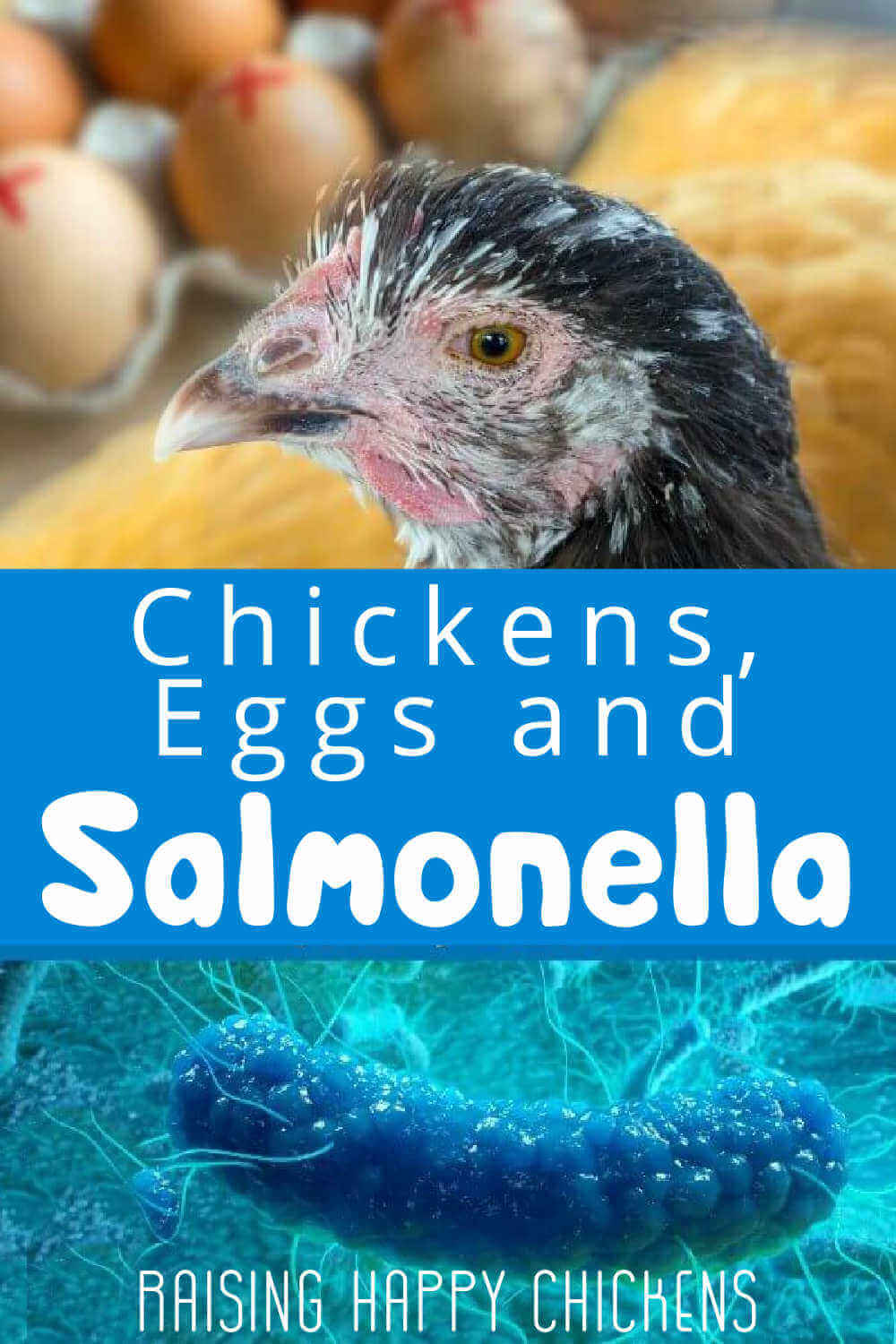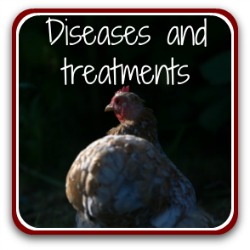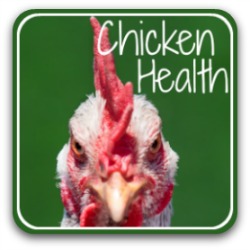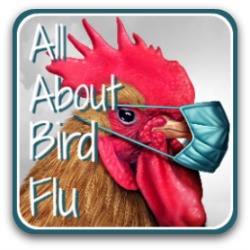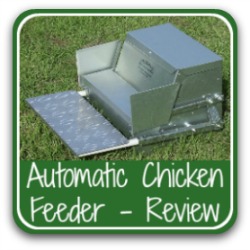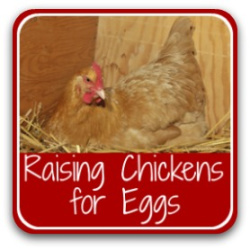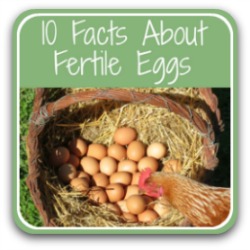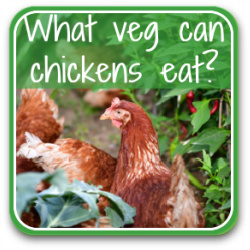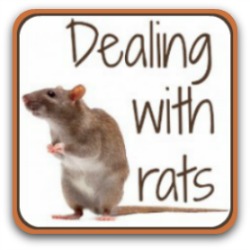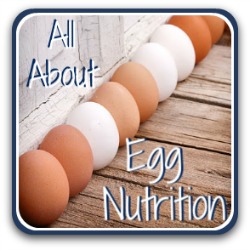Salmonella and your chickens: the facts.
Chickens and their eggs often get a bad press in terms of salmonella. But is it accurate?
Are our own chickens likely to make us ill?
You'll probably have seen some of the sensationalist headlines: "Backyard chickens cause salmonella outbreak"; "Elderly people should not touch backyard birds!" and the like.
But salmonella is entirely avoidable – and backyard flocks do not deserve to take the blame!
In this article we'll look at what it is, what causes it, where it's found, and how to spot and prevent it.
In particular, we'll look at the scientific evidence behind the difference between salmonella outbreaks in commercially farmed chickens and eggs, and our own backyard flocks.
Let's start at the beginning.
Looking for a specific issue about salmonella in chickens?
This is a long, detailed article. If there's a particular concern you want to investigate, use these links to go to the most relevant section.
Otherwise, continue scrolling to read all the facts.
What is salmonella?
Salmonella is a type of common bacteria which can, but does not always, cause an infection in humans which leads to chronic diarrhea.
Despite its bad press and the general panic the word creates, fewer than one hundred strains of the total 2,500 different types of salmonella cause symptoms in humans. Mostly, it goes completely undetected.
Nevertheless it's said(1) to be one of the major causes of bacterial infection in the United States, leading to 420 deaths each year.
The illness most often caused by salmonella is called Salmonellosis.
Is salmonella contagious?
Yes, highly contagious, but not necessarily from one person to another. It's most often spread by contaminated food and water(2).
Where is salmonella found?
Although eggs are commonly thought to be the main carriers of salmonella, it's known to be transmitted in many different ways.
Perhaps one of the least well known is that pet reptiles can transmit the bacteria. For example, an outbreak in 2017 was linked exclusively to pet turtles in the USA, spreading across at least nineteen states(3).
But the commonest key to all outbreaks is hygiene.
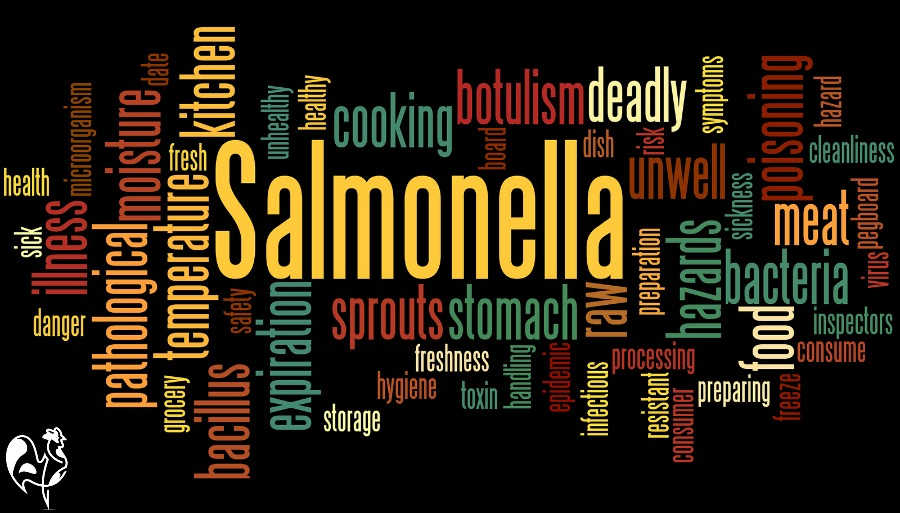
Salmonella in fruit, vegetables and spices.
Fruit and vegetables watered with or washed in contaminated water are susceptible to the bacteria. There's also growing evidence(2) that some spices carry the salmonella contaminants.
This is almost always due to poor hygiene in their growing and / or preparation. Warehouses infested with rats, for example, are a common source.
Salmonella in raw eggs.
Eggs certainly can carry the salmonella bacteria, but only if they come from already infected chickens.
The egg itself is an amazingly well protected food source. A fresh egg shell from a backyard chicken is covered with a natural waxy barrier, which prevents bacteria getting into the egg.
So the infection has to be introduced as the egg travels down the hen's oviduct to end up in the raw egg itself. If the chicken is not infected, the egg won't be either.
The exception to this is if the egg is washed and then comes into contact with an infected surface. Washing the wax barrier off the egg means the shell becomes porous. And bacteria travel easily through porous surfaces.
Why, then, are there around 79,000 cases of illness in the USA each year from eggs containing the Salmonella bacteria?
One simple answer: dirt.
Salmonella in chickens.
Chickens get salmonella for one reason: lack of hygiene. If they're kept in conditions where they're exposed to faeces, infected rodents, contaminated surroundings or other infected birds, they are far more likely themselves to become infected.
And once infected, a chicken will remain a carrier of the salmonella bacteria. The bacteria remain in their intestines. All future eggs, and the meat if the bird is eaten, will be contaminated.
So contamination from chickens to humans is by eating contaminated products which have not been cooked properly; by handling infected meat and touching other foods, or the mouth or eyes, without washing hands; and by touching contaminated surfaces.
What causes salmonella?
Commercial farming.
It should be fairly obvious by now that the main cause of a salmonella outbreak is poor hygiene and lax biosecurity measures.
In factory farming conditions, where chickens are kept by the tens of thousands in cramped, dirty surroundings, it's hardly surprising that bacterial outbreaks are common(4).
So common that both poultry sold for meat and eggs are commonly washed in a bleach solution to kill the bacteria.
It's not always successful, which is why cooking meat and eggs well before eating has become so critical in the USA.
In countries where welfare standards are higher, and in operations where chickens are kept on pasture with a good amount of room to range, there is simply not the same level of risk.
Causes of salmonella in backyard chicken flocks.
Contamination in backyard flocks can occur if chickens are left in dirty conditions, if coops, feeders and waterers are not kept clean, and if eggs are left in nest boxes to become covered in faeces.
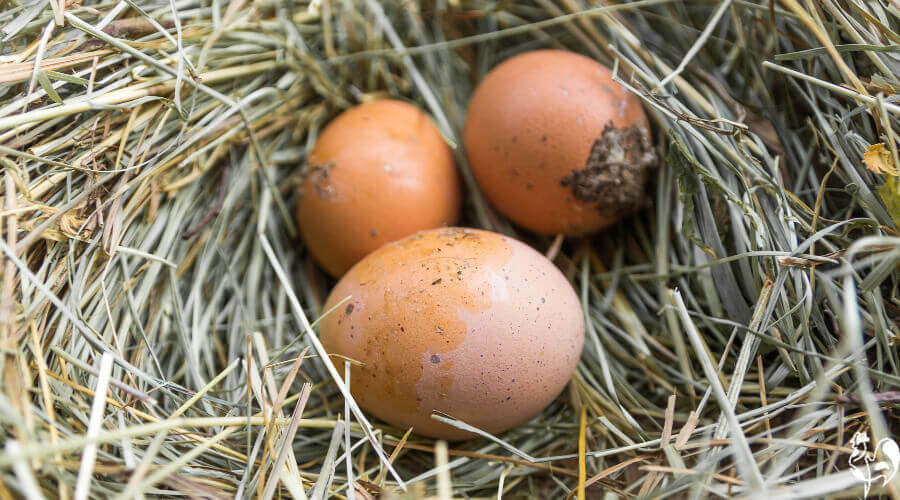 Eggs left in nest boxes are more likely to contract salmonella.
Eggs left in nest boxes are more likely to contract salmonella.In the kitchen, infection can happen if surfaces, utensils and hands are not properly cleaned, particularly before and after preparing raw meat.
Bacteria on your unwashed hands will quickly spread by touching surfaces, clothes and other people.
Salmonella symptoms in chickens.
Salmonella in baby chicks.
Salmonella outbreaks in hatcheries are fairly common, particularly when the hatcheries form part of the commercial factory farming process. Again, cramped conditions are the culprit(4).
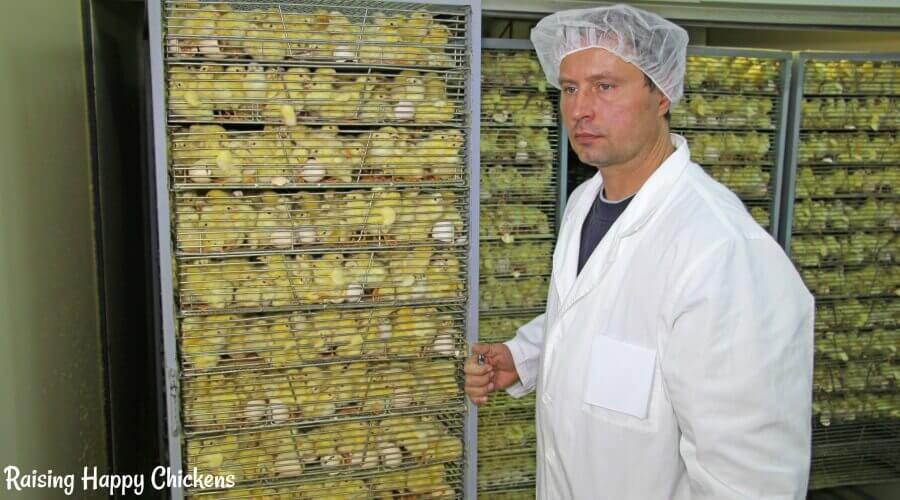 Cramped conditions in commercial hatcheries can lead to disease.
Cramped conditions in commercial hatcheries can lead to disease.This infection in baby chicks is often fatal within the first two to three weeks of life.
Ill chicks will want to be close to a heat source, won't be eating and as a result will lose body weight and die very quickly. You may also see a white diarrhoea type discharge around their vent.
If you order from a hatchery, make sure you check your chicks as soon as they arrive. And don't allow them to mix with other chicks, or adult chickens, until they've been isolated for two weeks.
Symptoms in adult chickens.
In adult chickens, there are often no clinical signs of salmonella poisoning – it's detected only by blood samples(4, 5).
As with other diseases you can look for general symptoms of unwell-ness: decreased or no egg production, pale comb and wattles, weak movements, watery diarrhea.
If you're concerned about whether your chickens are ill from this or any other disease, you should have them checked and blood samples taken by a qualified veterinarian.
But generally speaking, if you adhere to simple biosecurity and good husbandry measures, your backyard chickens will be far safer than birds raised in commercial conditions.
Salmonella symptoms in people.
Like chickens, most people who have salmonella have no symptoms. If you're going to develop symptoms they're most likely to come anywhere between six hours and six days after the initial infection, and last for between four and seven days (2, 6).
They can include some or all of the following:
- diarrhea
- stomach and abdominal cramps
- fever
- nausea and vomiting.
Some specific strains can cause severe complications, others develop joint pain which lasts for months and can develop into reactive arthritis(1, 6).
But most healthy people recover without requiring medical treatment(1, 2, 6).
Treatment for humans.
Those most at risk from salmonella are the very young and very old, pregnant women or people with compromised immune systems.
If you think you may have contracted salmonella, for example if you discover you've been in contact with a flock later found to be infected, you should seek your doctor's advice.
How to prevent salmonella poisoning.
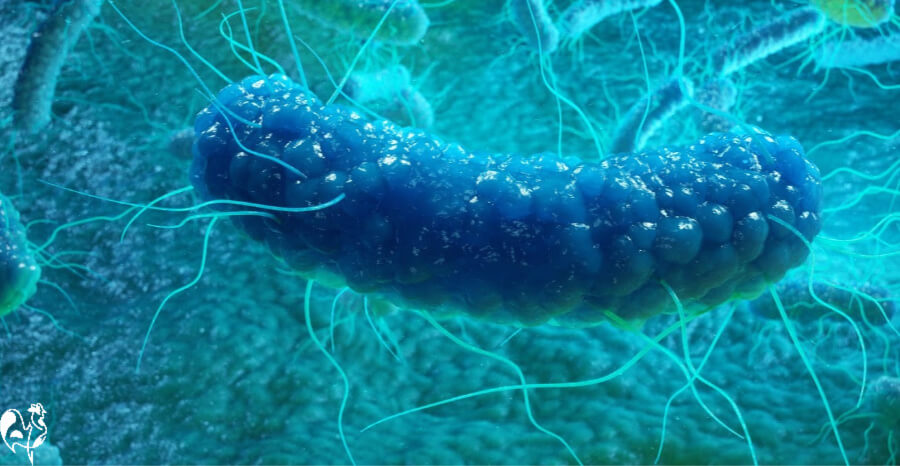 A 3D image of the salmonella bacteria.
A 3D image of the salmonella bacteria.The fact is that keeping backyard chickens means you have control over their health. That in itself makes the likelihood of you, your family or your chickens contracting salmonella from your own flock is unlikely.
But there are steps you can take to make it even more remote.
Buying commercially produced eggs.
Battery cages have already been banned in several countries, including all European Union members, New Zealand and several US states.
That is thought to have cut the number of salmonella infections(2). Nevertheless, commercial operations still leave much to be desired.
So if you buy eggs which are not labelled "pastured", even if they are called "organic" or "barn raised", be careful to cook them well. Heat kills the salmonella bacteria.
Pastured hens are able to access the outdoors and have room to range, so are far less likely to carry infection.
Put simple biosecurity measures in place.
There are five very simple steps you can take at no or minimum cost, to protect your chickens and your family from contracting illnesses.
You'll find them detailed in this article.
In particular, remember to wash your hands thoroughly after you have had any contact with your chickens, their coop, or feeders and waterers. It helps prevent transferring any bacteria to your mouth, eyes and any food you're preparing.
Incubating and hatching.
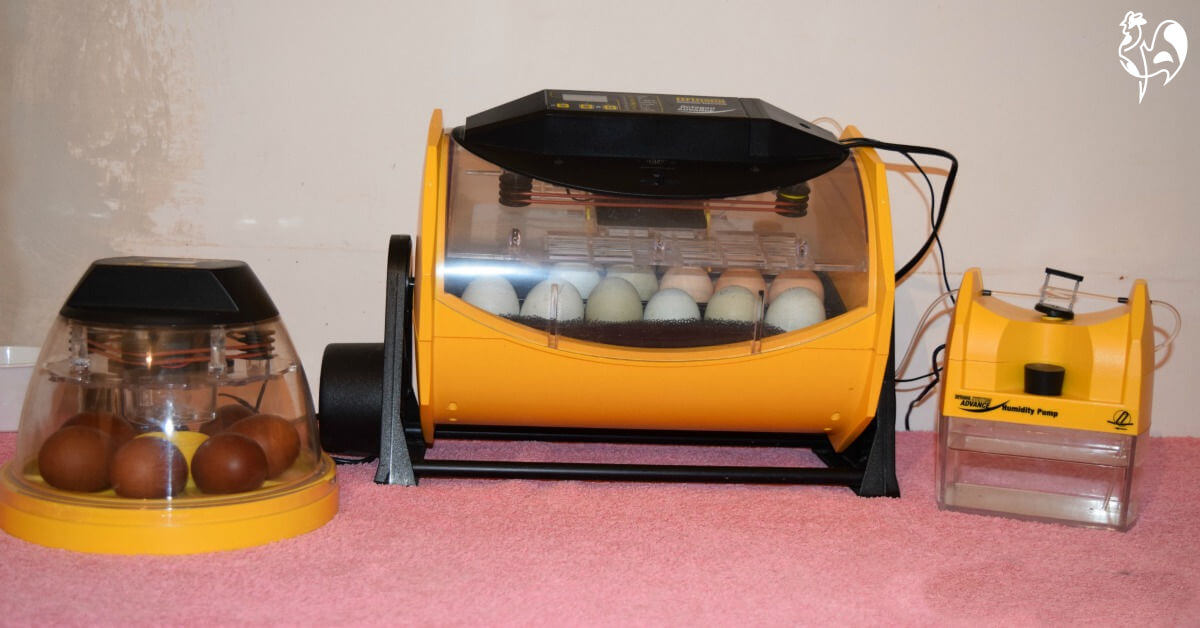 Make sure incubating equipment and hatching eggs are kept spotlessly clean.
Make sure incubating equipment and hatching eggs are kept spotlessly clean.- To avoid introducing salmonella bacteria into your flock, make sure you buy your hatching eggs from a reliable source.
- Keep your incubating and hatching equipment and your brooder spotlessly clean. Clean after you have finished incubation and again before you begin the next batch.
- If you buy hatching eggs or chicks from a hatchery, make sure they're salmonella free.
- Check new chicks as soon as they arrive, and keep them separate from other flock members until you're sure they're not infected. Two weeks is the usual time for isolation.
The coop and run.
- Bedding is a particular risk for disease. Keep it clean and free from poop. Consider adding roll away nest boxes – more information in this article.
- Deep clean the coop at least twice a year, using a good quality disinfectant.
- Only keep essential equipment in the coop and run. Make sure whatever is allowed in is first disinfected, and kept free from poop.
- Rodents are a potential source of disease. Make sure you have a system for keeping grain away from them, and check your coop and run regularly for signs of infestation.
- Wild birds, particularly water fowl, are a known source of diseases including salmonella and avian influenza. As far as possible, keep them away from your chickens.
Keep healthy chickens.
- There's strong evidence that protecting and improving the gut health of chickens helps prevent salmonella from infecting.
- Strengthen your chickens' immune systems by offering the right food, and healthy treats.
- In particular, consider natural sources of nutrients. Weeds and some plants are excellent, virtually free, resources.
- Make sure drinking containers are kept clean and free from algae, and water comes from a clean source.
- Using a source of acid in drinking water has been shown to improve gut health(6). It reduces bacteria in the waterer and decreases pressure on the birds' immune system.
- Apple cider vinegar is the obvious candidate here. Take a look at my detailed article for how and when to use it.
If you found this article helpful, these will be of interest to you.
Sources and further reading.
A lot of "facts" you'll find on the internet are often people's individual views, based on inaccurate information repeated from poor quality sources.
The information I provide in this article and others is based not just on my own experience, but on evidenced facts from scientific, peer-reviewed research and books from highly respected and experienced poultry keepers such as Gail Damerow.
Some of the trusted sources I have used in this article are these.
1. Center for Disease Control and Prevention: Salmonella: Q&A. Pub. 2019.
2. Mayo Clinic: Salmonella infection. Pub. Mayo Clinic, 2019.
3. Center for Disease Control and Prevention: Multistate Outbreak of Salmonella Infections Linked to Pet Turtles. Pub. 2018.
4. Koutsoumanis, K., et al: Salmonella control in poultry flocks and its public health impact. Pub. European food safety authority, 2019.
5. Hafez, H.: Salmonella infections in poultry: Diagnosis and control. Pub. Periodicum Biologorum, 2001.
6. Center for Disease Control and Prevention: Multistate Outbreaks of Human Salmonella Infections Associated with Live Poultry Contact, United States. Pub. 2012.
7. Caballero, M., and Barbosa, F. F.: Antibiotic reduction: the increased importance of high level biosecurity. Pub. E.W. Nutrition, 2020.
Please note: This page is written as general information only. It is not intended as medical or veterinary advice and should not be taken as such.
If you're worried about your chickens' health, you should always see your veterinarian.
